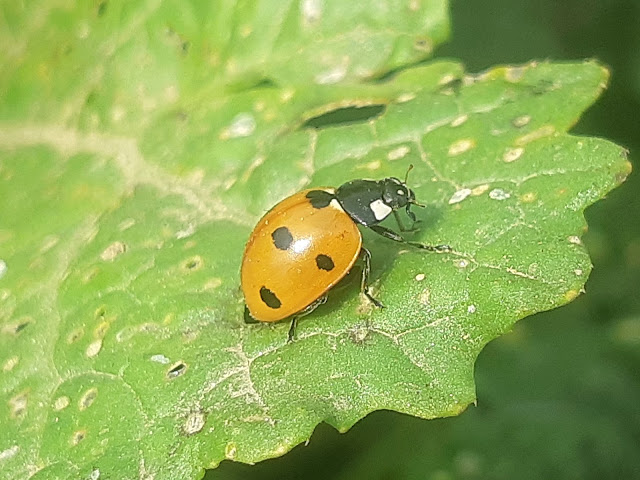Coccinella septempunctata: Unveiling the Charms and Ecological Significance of the Seven-Spot Ladybird
Introduction: The Seven-Spot Ladybird, scientifically known as Coccinella septempunctata, is a delightful insect often referred to as a ladybug or lady beetle. As a predator in both larval and adult stages, it plays a crucial role in natural pest control. This introduced species from Europe has become common across North America, India, celebrated for its distinctive appearance and beneficial ecological impact.
Physical Characteristics: Lady beetles have a typical insect body structure, consisting of a head, thorax, and abdomen. The adult Seven-Spot Ladybird is round and red, with a black pronotum featuring large white spots. Its wings display seven black spots, adding to its charm. Larvae, gray with orange spots, undergo several instars before pupating.
Lady beetle pupaFemales lay yellow oval eggs on leaves, and after hatching, larvae go through four instars over days. Population occurs on plant leaves or stems, Overwintering as adults in leaf litter completes the life cycle.
Floral Resources: In addition to insect prey, the Seven-Spot Ladybird can feed on pollen and nectar.
Biological Control: Known for its effectiveness in biological control, this species is a valuable ally in controlling aphid populations. It is commonly found in gardens and field crops.
 Seven-Spot Ladybird
Seven-Spot LadybirdConclusion: The Seven-Spot Ladybird, with its charming appearance and vital ecological role, stands as a testament to the positive impact of introduced species. Its prevalence and voracious appetite for pests make it a welcome visitor in various ecosystems, contributing to the delicate balance of nature.











Comments
Post a Comment